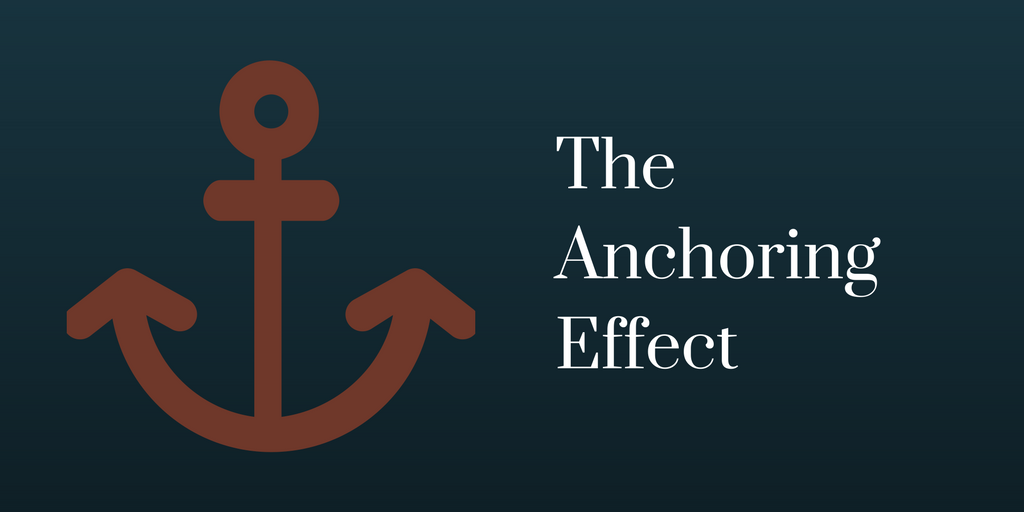
Cognitive Bias – Anchoring
Consider these two questions:
- Was George Washington more than 110 years old when he died? How old was he when he died?
- Was George Washington more than 30 years old when he died? How old was he when he died?
If we asked those questions to two separate groups of people, the estimates of when he died would be higher with the first group than with the second. That’s the essence of the anchoring effect: “any number that you are asked to consider as a possible solution to an estimation problem will induce an anchoring effect” (Thinking, Fast and Slow; Daniel Kahneman.) Apparently, this can even be affected by random numbers. Daniel Kahneman and Amos Tversky conducted a study at the University of Oregon in which they first had participants spin a wheel of fortune that was rigged to stop at either 10 or 65. They were then asked to guess what percentage of African nations were in the UN. Average estimates were 25% and 45%, depending on whether a 10 or 65 was spun, respectively.
So how is anchoring relevant to investments and finances? Consider what you paid for an investment, your cost basis. If you’re underwater on the investment, you’re likely to anchor your estimate of what the security is worth around your cost basis, and you’ll be reluctant to sell the security below that price, possibly even if a better investment comes along. There are other problems with your wiring that makes this difficult, but more on that in a later newsletter.
While we’re probably never going to dispense with the cost basis as an anchor, there is a way to combat it. Determine ahead of time a value for the security. (Warren Buffett calls this intrinsic value.) That’ll keep you from losing your head when the investment does well. However, since you’re not Warren Buffett, when you buy the security, determine the price where you’ll decide it was a bad investment, a stop-loss.
As for George Washington, he was 67 when he died.
